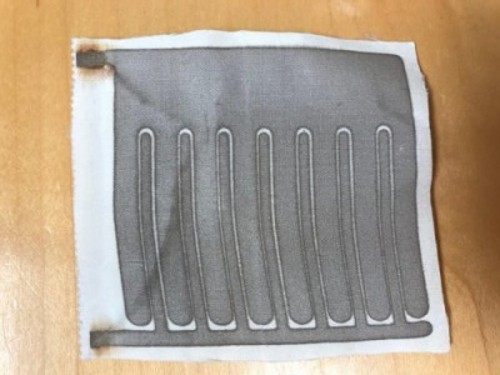
Now, a study by a team at The Ohio State University (OSU) is offering new clues about the science behind those bandages, and researchers say the findings could help lead to better wound treatment. Their findings are published in Scientific Reports.
According to OSU, the study is the first of its kind to look at the ways electroceutical bandages kill bacteria around a wound, allowing wounds to heal faster.
"The goal is to heal non-healing or chronic wounds, and, if infection is present, to remove infection," said Shaurya Prakash, an associate professor of mechanical and aerospace engineering and co-author of the study. "And what we wanted to understand was the mechanism behind why these electroceutical treatments work to kill bacteria."
Biofilms are small communities of microorganisms - including bacteria - that can live on the surface of the skin or a wound. The communities are held together by extracellular polymeric substances (EPS). The substances are generally made up of fats and proteins and can create a protective barrier that protects bacteria from treatments including antibiotics.
Electroceutical bandages made of the right materials can break through that barrier, Ohio State's research shows, destroying bacteria and allowing wounds to heal faster. The team developed a new model to study soft-tissue infections to learn more about how the bandages work.
The Ohio State study used haboti silk, a common Japanese weave, in the bandages. They silk-screened silver lines onto the silk and attached a small device to deliver electricity to the biofilm. When they applied the electrified bandage to bacteria-laden biofilm in the lab, the bacteria were destroyed.
The research team used electron microscopes to monitor the bacteria and observed that the electric current disrupted the biofilm enough to begin destroying bacteria. They also saw that bacteria continued to die off two days after the electric current was turned off. Their theory, based on these experiments, is that the bandage and electric current produce a potent antimicrobial chemical - hypochlorous acid - that takes over and kills bacteria without harming the healthy skin nearby.
This recent study was conducted on bacteria and biofilms in vitro, setting the stage for further research experiments that will help scientists better understand the reasons why biofilms work the way they do. That fundamental understanding will help improve the design of electroceutical bandages, Prakash said.





IEA report claims batteries are ‘changing the game’
Oh I don't know. The typical waiting time outside of A&E for admitting patients would give them plenty of time to recharge … ?